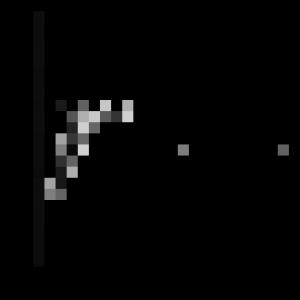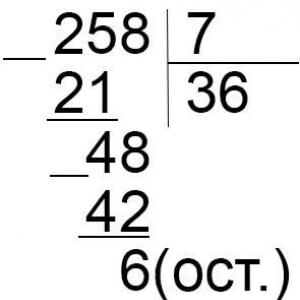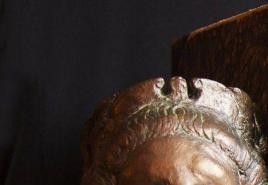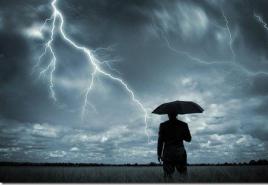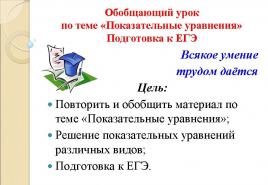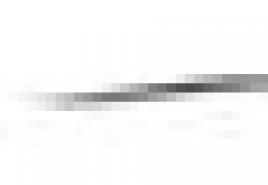Mastery test on modern history on the topic: “The world at the beginning of modern times. Gateway to Europe in Madrid
Mastery test in new history on the topic: "The world at the beginning of modern times"
Option 1
1 Which country was the leader in exploring new lands:
1) England, 2) France, 3) Portugal, 4) Italy
2. Which seafarer was the first to discover the sea route to India:
1) B. Dias, 2) F. Magellan, 3) Vasco da Gama, 4) A. Vespucci
3 .What city in Europe was called "the gate of Europe":
1) London, 2) Paris, 3) Berlin, 4) Antwerp
4 .Choose from the following list of Renaissance artists:
1) T. Mor, 2) F. Rabelais, 3) Leonardo da Vinci, 4) Cervantes, 5) A. Durer, 6) D. Velazquez
5. Which of the following scientists was a famous physician:
1) N. Copernicus, 2) D. Brunno, 3) G. Galileo, 4) W. Harvey
6 .In what year the Reformation began in Europe:
1) 1517, 2) 1520, 3) 1525, 4) 1530
7. Name the year of the creation of the Jesuit Order:
1) 1530 g, 2) 1540 g, 3) 1550 g, 4) 1555 g.
8 ... Which country did England compete with for the maritime championship:
1) France, 2) Spain, 3) Holland, 4) Denmark
9 .What French king received the nickname "glorious and kind":
1) Charles X, 2) Henry II, 3) Henry III, 4) Henry IV
10. Richelieu was:
1) first minister, 2) a major admiral, 3) a banker, 4) an industrialist
11 .Establish a correspondence between a cultural figure and the area in which he worked
ACTIVITY FIELD OF ACTIVITY
1. E. ROTTERDAMSKY A. PAINTING
2. W. SHAKESPEARE B. LITERATURE
3. MICHELANGELO V. PHILOSOPHY
4 LEONARDO DA VINCI G. SCULPTOR
12. Which four of the following events were related to the reformation:
1). 95 theses, 2) T. Munzer, 3) Jesuits, 4) fencing, 5) humanism, 6) indulgence
13 ... Give a definition to the concepts:
Manufactory
Auto-da-fe
Edict
14 .Place the missing words in the text: “Spirit (1) _________ transforms society too.
The numbers and wealth of the bourgeoisie are increasing. Much urban
population works according to (2) ______________. They are hired workers.
15 ... What new features in the economic life of society allow us to talk about
the emergence of a capitalist economy?
Mastery test in modern history on the topic: "The world at the beginning of modern times"
Option -2
1 Which country was the leader in the exploration of new countries:
1) 1) France, 2) England), 3) Spain, 4) Italy
2 Which seafarer was the first to sail around the world:
1). J. Columbus, 2) Vasco da Gama, 3) F. Magellan, 4) B. Dias
3 ... Every merchant in Europe almost daily until noon visited:
1) church, 2) town hall, 3) manufactory, 4) stock exchange
4 .Choose from the list of faces of figures of the literature of the Renaissance:
1) T. More, 2) F. Rabelais, 3) A. Durer, 4) Cervantes, 5) D. Bruno, 6) W. Shakespeare
5 Which of the following scientists considered the human mind as a source of knowledge:
6 ... What year did it start peasant war in Germany:
1) 1517, 2) 1520, 3) 1525, 4) 1535
7. Name the founder of the Jesuit order:
1) J. Calvin, 2) M. Luther, 3) T. Münzer, 4) I. Loyola
8 ... With which country did Spain fight for sea dominion in the 16th century:
1) Italy, 2) France, 3) England, 4) Germany
9. In what year was the Edict of Nantes signed in France:
1) 1558, 2) 1568, 3) 1588, 4) 1598
10 Which of the following is relevant to Richelieu:
1) was an ardent opponent of reforms
2) support for the Huguenots in France
3) encouraged the development of industry, trade, shipping
4) encouraged duels between nobles
11 Match the names of scientists and their discoveries
SCIENTIFIC DISCOVERY
1.I. Newton A. developed the doctrine of natural human rights
2.G. Galileo B. the law of universal gravitation
3. W. Harvey W. discovered the moons of Jupiter
4. D. Locke G. concept of blood circulation
12 . Which three of the listed events are related to the rule of the English
queen Elizabeth I:
1) England has achieved success in the development of trade and navigation
2) proclaimed the Protestant Church
3) adored feasts and holidays
4) persecuted the Puritans
5) was an affectionate and kind ruler
6) did not support corsairs (pirates)
13 ... Give definitions to the concepts:
Exchange-
Huguenot-
Taglia-
14 .Insert the missing words in the text: “..However, the old (1) _______,
economic structure.
15 .Why exactly at the end of the 15th - beginning of the 10th century, the Great
geographical discoveries?
Keys to tests
Option 1
Manufactory is a large enterprise where there is a division of labor and manual labor
Auto-da-fe-enactment of the verdict of the inquisition
Edict - a particularly important decree of the king
14.1-entrepreneurship
15. Development of domestic trade, the establishment of international trading companies,
exchanges testify to the development of a market economy. Development of manufactories,
the use of hired labor.
Option -2
Huguenot - Protestant supporter
Taglia is the main direct tax in France
14.1-nobility
2-privileges
15. By the fifteenth century, the population of European cities had grown dramatically. Developing rapidly
crafts, trade, international trade. Invention of new types of ships
caravels, made it possible to make more distant travels with a minimum
crew and large ship capacity. The emergence of firearms
secured these travels. Great success was achieved by cartography, maps of steel
more accurate, and instruments such as compasses and astrolabes are successfully used in navigation.
Trade with the countries of the East gave fabulous profits of 700-800%.
Probably the most popular architectural landmark in the world is the Leaning Tower of Pisa in Italy. However, few people still know that there are two such extravagant buildings in Madrid. These are two skyscrapers inclined towards each other. The Spaniards call this miracle the "Gateway to Europe".
The main difference between the grandiose architectural complex and the Pisa rival is that the Italian tower “falls” due to the ill-conceivedness of the architect, and the Spanish skyscrapers are a deeply calculated brainchild of talented American engineers John Burge and Philip Johnson.
The history of the creation of the Gateway to Europe
This whole story began in 1996, when John and Philip decided to surprise the whole world with something unusual. The architects' daring creative plans were to break the stereotypes of rectangular construction. Sophisticated minds have found a way to bypass Earth's gravity. This is how the most unique twin towers appeared in the capital of Spain, inclined to each other by fifteen degrees. The works of inquisitive architects today amaze millions of tourists visiting Spain. The Gate of Europe can rightfully be called one of the main centers of attraction for visitors to Madrid.

In the beginning, these slanting towers in Plaza de Castilla were owned by a Kuwait-based construction company called Kuwait Investments Office. Therefore, at first, these giants were called simply as KIO towers. However, a little later the tower was bought by a Spanish investment corporation, where the originals were found, which called this building among themselves "the gateway to Europe." People liked this name very much and now the towers are called only this way and not otherwise. I must say that today this is a completely official name for the towers. Aquamarine glass structures are hard to miss. Each tower is one hundred and fourteen meters high, with twenty-five floors.
The rooftops of the ultra-modern skyscrapers have multi-colored helipads. The platform on the left tower is blue, and on the right one is red. One of the towers was recently owned by the financial conglomerate Caja Madrid, as indicated by the prominent logo on the glass façade. Another tower is owned by the Spanish construction company Realia, which also placed its logo at a height of 100 meters.

It must be said that, despite the fact that the towers are not the tallest structures in Madrid, they still captivate the eyes of new visitors. Falling skyscrapers give the city a special charm, make it more modern and at the same time contrasting with the background of numerous medieval palaces. The towers were made even more aesthetically attractive when a white stone obelisk was installed between them in honor of the famous politician José Calvo Sotelo.

After visiting the Gateway of Europe, visit the magnificent one, and if you have already visited this abode of art, then we recommend spending time in the largest in Madrid.
Useful information for tourists:
Address: Paseo de la Castellana, 216
How to get there:
By Metro: Plaza de Castilla Station (Line 6);
By bus: Plaza de Castilla stop, lines 5,27,42,49,66,70,107,124,129,147,149 and 174
Probably the most popular architectural landmark in the world is the Leaning Tower of Pisa in Italy. However, few people still know that there are two such extravagant buildings in Madrid. These are two skyscrapers inclined towards each other. The Spaniards call this miracle the "Gateway to Europe".
The main difference between the grandiose architectural complex and the Pisa rival is that the Italian tower “falls” due to the ill-conceivedness of the architect, and the Spanish skyscrapers are a deeply calculated brainchild of talented American engineers John Burge and Philip Johnson.
Let's remember the history of their creation ...
Photo 2. 
This whole story began in 1996, when John and Philip decided to surprise the whole world with something unusual. The architects' daring creative plans were to break the stereotypes of rectangular construction. Sophisticated minds have found a way to bypass Earth's gravity. This is how the most unique twin towers appeared in the capital of Spain, inclined to each other by fifteen degrees. The works of inquisitive architects today amaze millions of tourists visiting Spain. The Gate of Europe can rightfully be called one of the main centers of attraction for visitors to Madrid.
The towers are 114 meters high and the number of floors is 26. After the Torres de Santa Cruz towers, these are the second tallest twin towers in Spain.
The European Gate, the world's first "falling" skyscrapers, was designed by American architects Philip Johnson and John Burgey. They are also known as KIO towers, as they were originally commissioned by the Kuwaiti company of the same name.
Photo 3. 
Tower-building company Urbanor became a defendant in a noisy fraud case - one of the largest economic scandals in Spain. However, a little later, the tower was bought by a Spanish investment corporation, where the originals were found, which called this building among themselves "the gateway to Europe." People liked this name very much and now the towers are called only this way and not otherwise. I must say that today this is a completely official name for the towers. Aquamarine glass structures are hard to miss.
The grand opening of the towers took place in 1996. Shortly after the end of the project, another high-profile lawsuit attracted the public's attention: the financier Javier de la Rosa, who led the investment operations of the KIO group, was charged with misappropriation of 375 million euros and sentenced to imprisonment.
Photo 4. 
The rooftops of the ultra-modern skyscrapers have multi-colored helipads. The platform on the left tower is blue, and on the right one is red. One of the towers was recently owned by the financial conglomerate Caja Madrid, as indicated by the prominent logo on the glass façade. Another tower is owned by the Spanish construction company Realia, which also placed its logo at a height of 100 meters.
It must be said that, despite the fact that the towers are not the tallest structures in Madrid, they still captivate the eyes of new visitors. Falling skyscrapers give the city a special charm, make it more modern and at the same time contrasting with the background of numerous medieval palaces. The towers were made even more aesthetically attractive when a white stone obelisk was installed between them in honor of the famous politician José Calvo Sotelo.
Photo 5. 
In 2009, the appearance of the square where the towers are located changed markedly due to the construction of the obelisk designed by Santiago Calatrava. There is also a monument to Jose Calvo Sotelo (1960) on the square.
Photo 6. 
Photo 7. 
Photo 8. 
Photo 9. 
Photo 10. 
Photo 11. 
Photo 12. 
Photo 13. 
Photo 14. 
Photo 15. 
Photo 16. 
Photo 17. 
Photo 18. 
Photo 19. 
Photo 20. 


